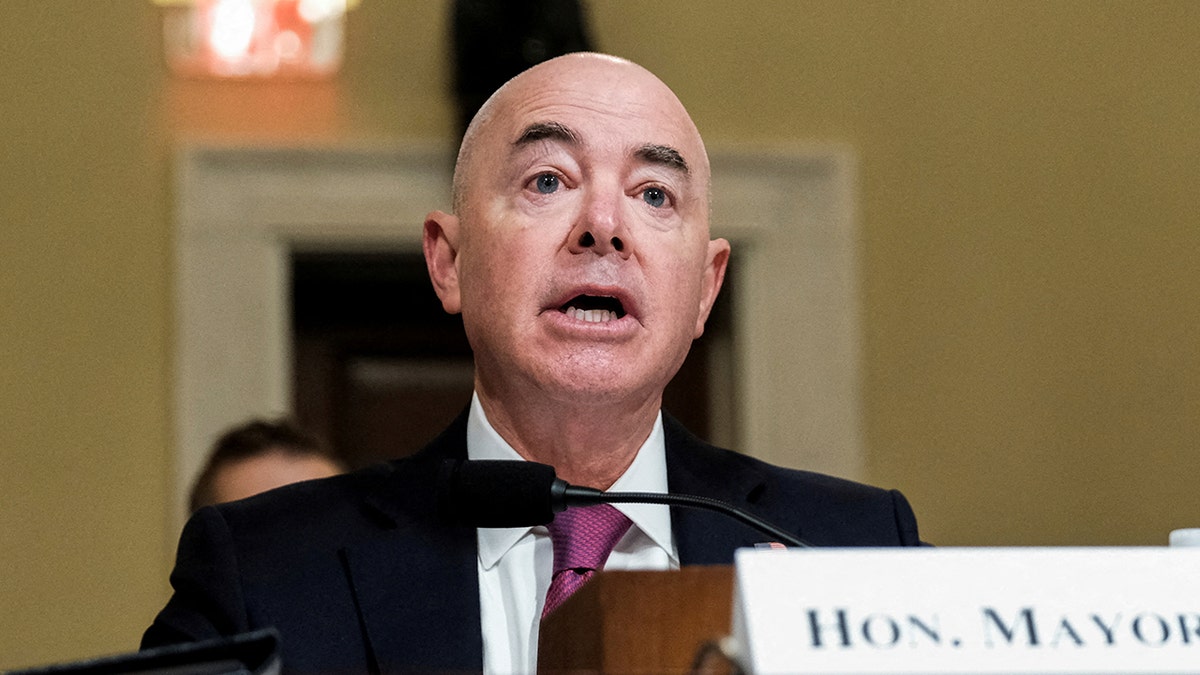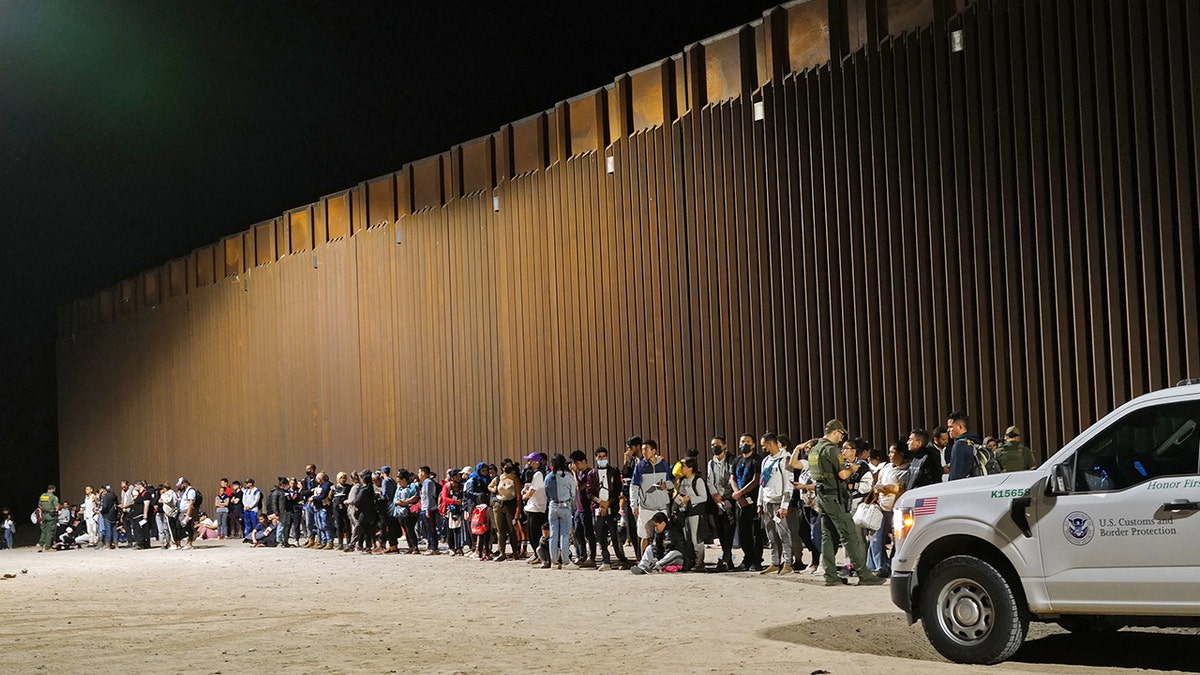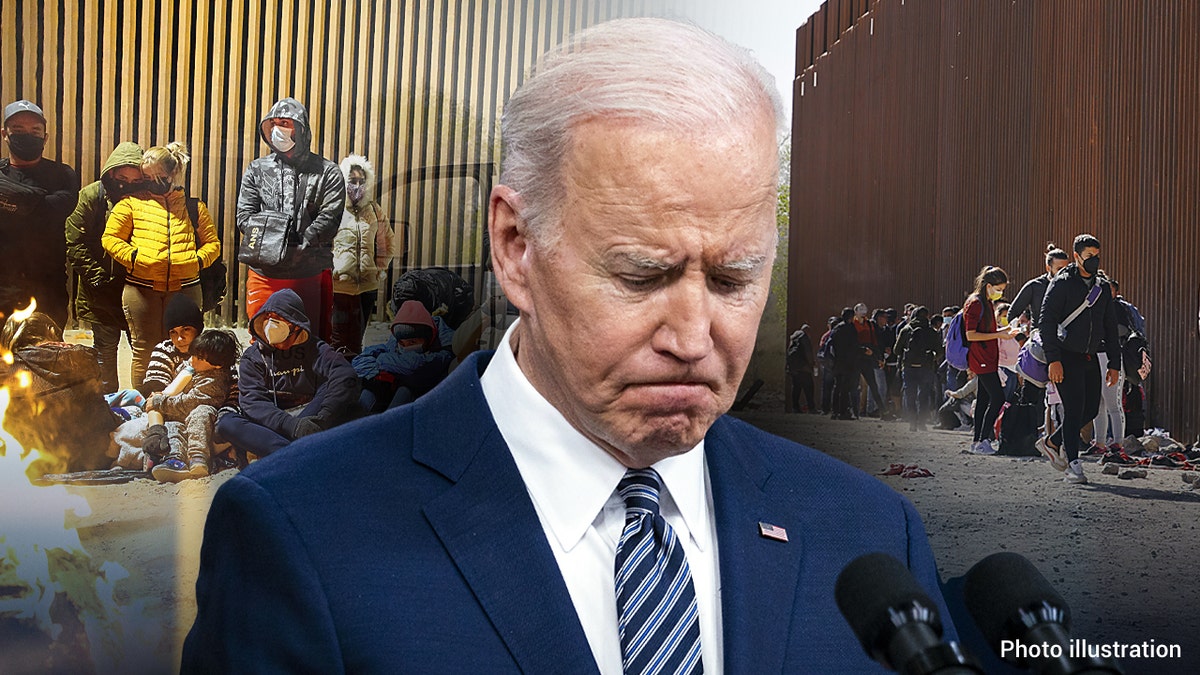Majority of American voters underestimate yearly border crossings: Poll
'Special Report' panelists react to Biden's border crisis and the White House plan to address the influx.
It was a bad year in 2021 at the U.S. southern border with more than 2 million migrant encounters and a political crisis that engulfed much of the administration’s first year in office.
In 2022, that crisis only escalated.
A massive surge in migration hit the southern border just as President Biden was taking office and didn’t let up. Numbers dropped slightly throughout the winter but were still significantly higher compared to the previous year, bringing enormous political pressure on the administration that reportedly enraged Biden.
In January, the border registered 154,874 migrant encounters, compared to just 78,414 in January 2021. And it set a trend for months to come. All but two months of 2022 (July and August) would outpace 2021’s already historically high numbers.
CBP HAS EXPERIENCED 575,000 MIGRANT ENCOUNTERS SINCE OCT. 1, AGENTS REMAIN OVERWHELMED

Department of Homeland Security Secretary Alejandro Mayorkas testifies before a House Homeland Security Committee hearing on "Worldwide Threats to the Homeland" on Capitol Hill in Washington, Nov. 15, 2022. (REUTERS/Michael A. McCoy)
Mayorkas faces agents' ire
The year started out particularly rough for embattled Homeland Security Secretary Alejandro Mayorkas, who received a rough reception from Border Patrol agents with sinking morale and anger toward the administration’s policies.
Mayorkas was present at a gathering where agents reportedly turned their back on him, and he watched as agents accused the administration of "releasing criminal aliens into the country."
Mayorkas described the visit as a "tough trip."
"I really appreciated the openness with which the agents expressed their views," he said in an interview. "A couple of guys might have expressed them what I felt was unprofessionally, which was surprising to me because it's something I've never seen in the Border Patrol in my … eight years of person-to-person exposure."
Title 42 becomes Catch-22
The controversy over the border deepened into the spring months as the Centers for Disease Control and Prevention (CDC) announced in April it was ending the use of the Title 42 public health order to expel migrants at the southern border. That order, implemented in March 2020 due to the COVID-19 pandemic, allowed for the rapid expulsion of migrants at the southern border and had been used by both the Trump and Biden administrations.
The looming end to that order immediately raised fears among both Democrats and Republicans that it would encourage even more migrants to flood to the border, knowing that they would have a greater chance of being released into the U.S.
The Department of Homeland Security outlined its six-point plan to cope with the ending of the order, a plan that included more resources and a greater use of alternative expulsion authorities. However, it sparked alarm with predictions of up to 18,000 migrant encounters a day once the order ended. Republicans and Democrats united behind legislation to extend the order.
Eventually, a federal judge blocked the administration from ending the order, finding it unlawful in response to a lawsuit from Republican states. However, that only stalled the Title 42 dilemma until later in the year.

Migrants attempting to enter the U.S. from Mexico are detained by U.S. Customs and Border Protection at the border Aug. 20, 2022, in San Luis, Arizona. (Nick Ut/Getty Images)
The spring and summer of 2022 saw historic numbers that were even greater than 2021, with the border recording over 200,000 encounters each month from March on. Fox News reported later in the year that there were nearly 600,000 "gotaways" who slipped past Border Patrol for the fiscal year.
Mayorkas drew criticism as one of a number of Biden officials who claimed, on multiple occasions, that the border was "secure."
Republicans eye probes, impeachment
As numbers remained high through the fall and winter months, the Biden administration faced two new issues related to the border. The first was the midterm elections, which will usher in a Republican House in January.
GOP leadership immediately made it clear it would focus in on the border crisis, passing legislation and investigating the administration’s handling of the crisis. House GOP Leader Kevin McCarthy says he will hold hearings on the border and warned that, unless Mayorkas resigned, he could face impeachment hearings.
Title 42: Part 2
Title 42 would also become an issue once again after a federal judge in early November ruled that the use of the order was unlawful, mirroring a ruling made by another judge earlier in the year. The judge reluctantly gave the administration five weeks to end the order, expiring on Dec. 21.
Again, the administration claimed it had a plan in place to deal with the end of the order, just as migrants began camping out in Mexico ahead of the expected end of the order.

Asylum seekers from Colombia, Venzuela and Cuba wait next to the U.S. border wall with Mexico to be processed by CBP Feb. 21, 2022 in Yuma, Arizona; President Biden speaks about reducing energy prices March 31, 2022. (Katie McTiernan/Anadolu Agency via Getty Images | Al Drago/Bloomberg via Getty Images )
This time, the Supreme Court stepped in. In response to a last-ditch effort by Republican states, Supreme Court Chief Justice John Roberts put a temporary hold on the order's expiration while the court considers the request.
CLICK HERE TO GET THE FOX NEWS APP
The hold puts the crucial order in limbo. It remains unclear how long the order will be extended, with the status quo potentially extending into the spring of 2023.
So far for fiscal year 2023, migrant encounters have exceeded fiscal 2022's, suggesting calendar year 2023 could be as tumultuous as the past year.







